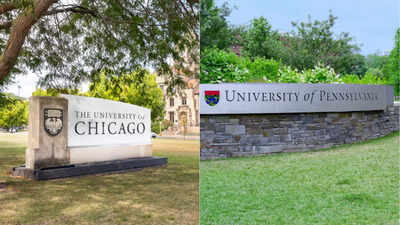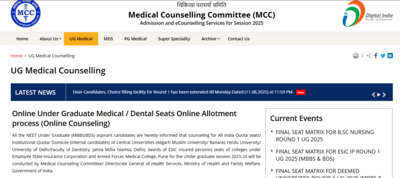University of Chicago vs UPenn: Which elite university offers the best return on investment?

When it comes to elite American universities, the University of Pennsylvania and the University of Chicago stand out for their global reputations, rigorous academics, and career-launching potential. In the QS World University Rankings 2026, both institutions have earned places in the top 20 globally — Penn at number 15 and Chicago at number 13 — signaling their status as premier destinations for students with high ambitions. So, how do these Ivy-plus institutions compare across key metrics?At a Glance: QS 2026 Key Indicators
Employability: A Tight Race at the TopBoth universities shine when it comes to preparing students for the job market. Penn scores a perfect 100 in Employment Outcomes, narrowly edging out Chicago’s impressive 99.8. Chicago slightly outpaces Penn in Employer Reputation, but both are nearly perfect, indicating graduates from either school are highly sought after.Chicago’s strength stems from its tight-knit professional networks—especially through Booth School of Business—while Penn benefits from its broad interdisciplinary approach and strong corporate pipelines, particularly via The Wharton School, which regularly produces Fortune 500 leaders.Academic Reputation & Research OutputThe University of Chicago leads slightly in Academic Reputation (99.8) and Citations per Faculty (78.1), reflecting its legacy in economics, law, and the humanities, as well as its commitment to foundational research. The institution’s history of Nobel laureates and deep scholarly influence across disciplines reinforces this edge.Penn remains a strong academic force, with a reputation score of 98.9, bolstered by its balance of liberal arts and pre-professional excellence. While Chicago is known for its intensity and theoretical rigor, Penn promotes flexibility and innovation through its highly customizable programs and dual degrees.Learning Environment: Personalized vs. IntegratedPenn narrowly edges out Chicago in Faculty-Student Ratio (99.9 vs. 97.3), which contributes to an intimate and highly personalized classroom experience. Both schools pride themselves on small class sizes and direct access to world-class faculty, but Penn’s emphasis on interdisciplinary learning allows students to easily combine fields like business, tech, policy, and design.Chicago, with its famed Core Curriculum, delivers a deeply analytical and philosophical education. It’s ideal for students who thrive on debate, theoretical frameworks, and the exploration of ideas across disciplines.Global Engagement & DiversityChicago leads in internationalization, particularly in International Student Ratio (92.8) and a globally integrated research environment. This aligns with its reputation as a truly international academic hub.Penn, however, holds the upper hand in International Faculty Ratio (96.9) and Student Diversity (78.6), reinforcing its appeal to faculty and students from around the world. Its diverse campus community, rooted in Philadelphia’s cosmopolitan landscape, provides rich opportunities for cross-cultural learning and collaboration.Sustainability & Forward ThinkingPenn earns a significantly higher Sustainability Score (95.0) compared to Chicago’s 73.3, signaling a stronger institutional commitment to environmental stewardship and sustainable development initiatives. Penn’s campus-wide sustainability efforts, including green buildings, climate action plans, and sustainability-focused programs, position it as a leader in this increasingly important domain.Campus & Culture: Urban Energy vs. Intellectual IntensityLocated in Philadelphia, Penn’s campus blends historic architecture with modern research facilities across a 279-acre urban environment. With over 400 student organizations, a thriving arts scene, and strong Division I athletics, Penn offers a balanced mix of academic rigor and vibrant campus life.Chicago, set in the Hyde Park neighborhood, delivers a more cerebral atmosphere. It’s known for intense intellectual engagement, documentary film societies, and a rich tradition of public discourse. Students often describe the culture as purpose-driven, where curiosity is rewarded and complexity embraced.





